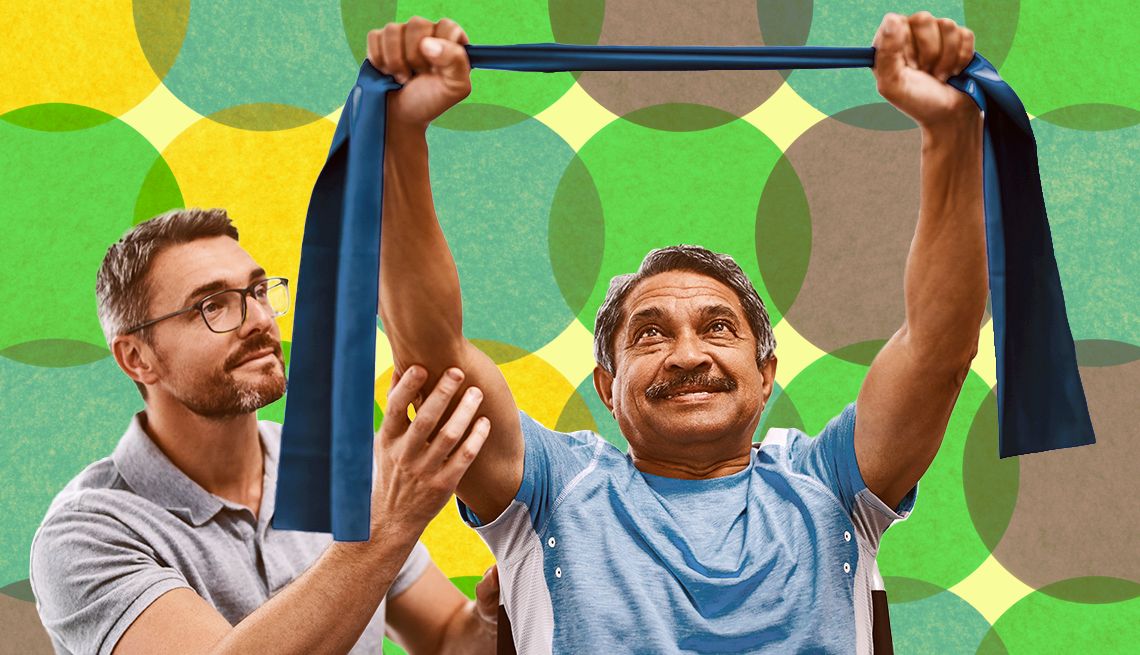AARP Hearing Center


Aching elbow? Crackly knees? Hurting hip? You’re in good company.
About 70 percent of adults 50 and older experience joint pain at least occasionally, and 60 percent have been told they have some form of arthritis, according to a 2022 report from the University of Michigan National Poll on Healthy Aging, supported by AARP. More than 32.5 million U.S. adults have the most common form of arthritis, known as osteoarthritis.
When it comes to managing this pain, many adults are taking matters into their own hands, testing out acupuncture and massage, the University of Michigan poll found. Others are popping pain relievers, swallowing supplements and even seeking experimental therapies.
Dr. Beth Wallace, an assistant professor in internal medicine at the University of Michigan and a rheumatologist at the VA Ann Arbor Healthcare Center, says if joint pain is getting in the way of your everyday life, you don’t have to go at it alone.
Risk Factors for Osteoarthritis
- Joint injury or overuse
- Age: The risk of developing osteoarthritis increases as you get older.
- Sex: Women are more likely to develop osteoarthritis than men, especially after age 50.
- Obesity: Extra weight puts more stress on joints, particularly weight-bearing joints like the hips and knees, increasing the risk of osteoarthritis.
- Genetics: People who have family members with osteoarthritis are more likely to develop it.
- Osteoarthritis in another body location: If you have osteoarthritis in the hand, you’re more likely to develop it in the knee.
- Race: Some Asian populations have lower risk for osteoarthritis.
Source: U.S. Centers for Disease Control and Prevention
“Don’t hesitate to talk to your doctor, especially if you’re taking medications to help manage it,” she says. “Even over-the-counter medications can have risks.”
Another reason to consult a doctor: Given the plethora of treatments available for joint pain, some of which don’t work or might not work for you, “it is our job to synthesize the evidence and the science that’s out there,” says Dr. Karl Koenig, an orthopedic surgeon who specializes in hip and knee arthritis and executive director of the Musculoskeletal Institute at UT Health Austin.
Just know there is no cure for osteoarthritis, which occurs when the joint cartilage between bones breaks down, and there’s nothing that can stop the process once it has started.
“It’s a natural wear and tear phenomenon from living in a world with gravity,” says Dr. Robert Sterling, chair of the Department of Orthopaedic Surgery at the George Washington University School of Medicine and Health Sciences.
But there are things that can help mitigate the pain from osteoarthritis. Here are some joint pain treatments older adults are trying, according to the research, and the evidence behind them.
Exercise
Physical activity is an effective strategy
It may sound counterintuitive, but moving your body can help alleviate some of the pain, stiffness and swelling you feel before, during or after physical activity.
“People often think if it hurts, I shouldn’t move,” Koenig says. With osteoarthritis pain, however, it’s the opposite.
“The nutrition of the cartilage is actually driven by the fluid in the joint, and so by moving, you’re actually providing nutrition to the remaining cartilage that’s there and you prevent some of the stiffness that goes on,” Koenig explains.
People with arthritis pain also tend to have some associated weakness in the muscles around the affected joint, Sterling says. Doing a supervised exercise program like physical therapy has been shown to improve arthritis symptoms, he adds.
Furthermore, exercise helps keep your weight down, which is another important factor in controlling osteoarthritis pain. Studies have shown that every pound of body weight you lose takes four pounds of force off the knee, says Sean S. Rajaee, an adult reconstruction and joint replacement surgeon at Cedars-Sinai Medical Center in Los Angeles.
“If someone were to lose five or 10 pounds, that’s taking up to 20 or 40 pounds off their knee, and if they’re taking 5,000 steps or 10,000 steps a day, that’s a lot of potential protection that you’d get from a little bit of weight loss,” Rajaee says.
The American College of Rheumatology recommends exercises like cycling, tai chi and yoga, in addition to strength and balance work. If you’re still experiencing some discomfort, Sterling says, wearing a brace or splint over the affected joint can help. Likewise, a cane can provide support for people with pain in their knee or hip.
No need to spend extra money on a brace lined with copper, says Wallace, who is an author on the joint pain poll. There’s no evidence to support that the metal, sometimes marketed as a helpful tool for arthritis, has any pain-relieving properties.
The National Poll on Healthy Aging found that while most joint-pain sufferers exercise (64 percent) and a smaller share do physical therapy (24 percent), far fewer opt for nondrug options such as splints and braces (13 percent).




































































More From AARP
FDA Approves New Non-Opioid Pain Relief
The first-of-its-kind medication could be especially beneficial to older adults
10 Effective Ways to Help Relieve Pain
In his new book, Sanjay Gupta reveals tips for living with chronic pain
Exercises to Strengthen and Prevent Back Pain
Improve mobility and ease the aches